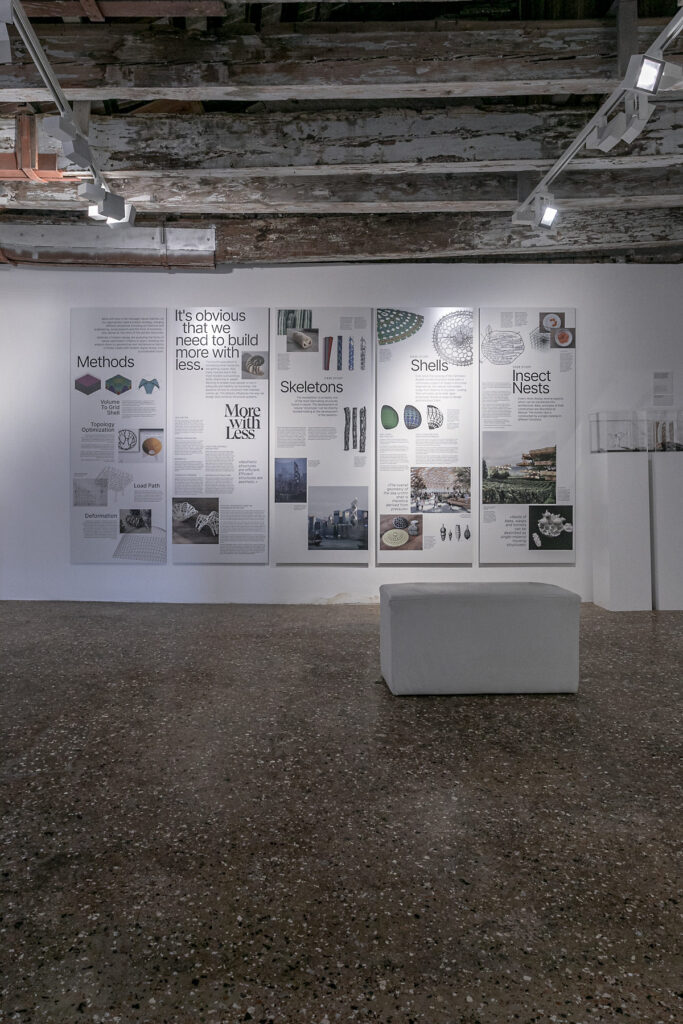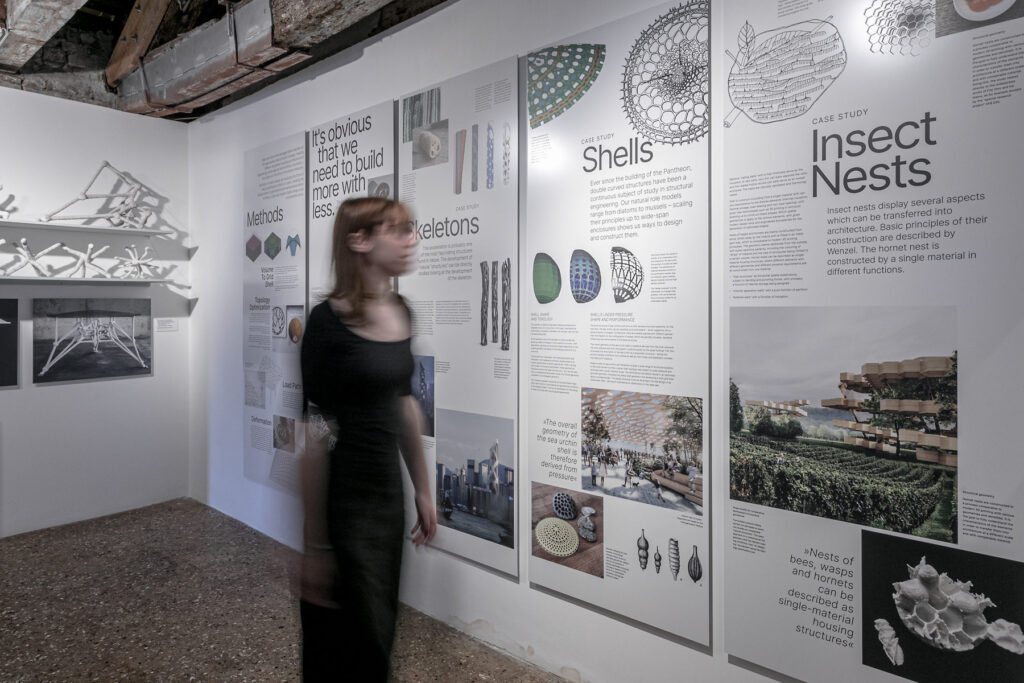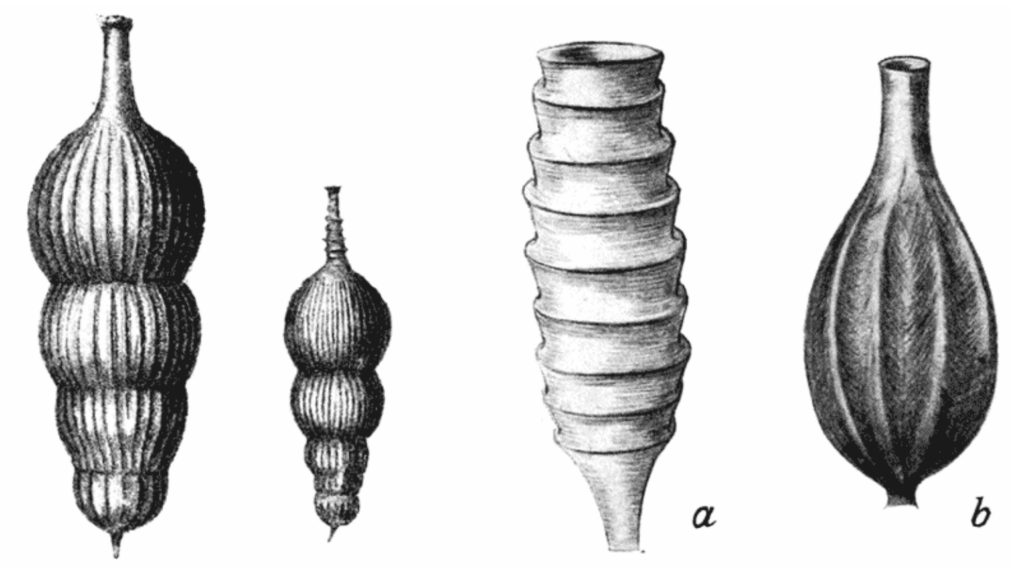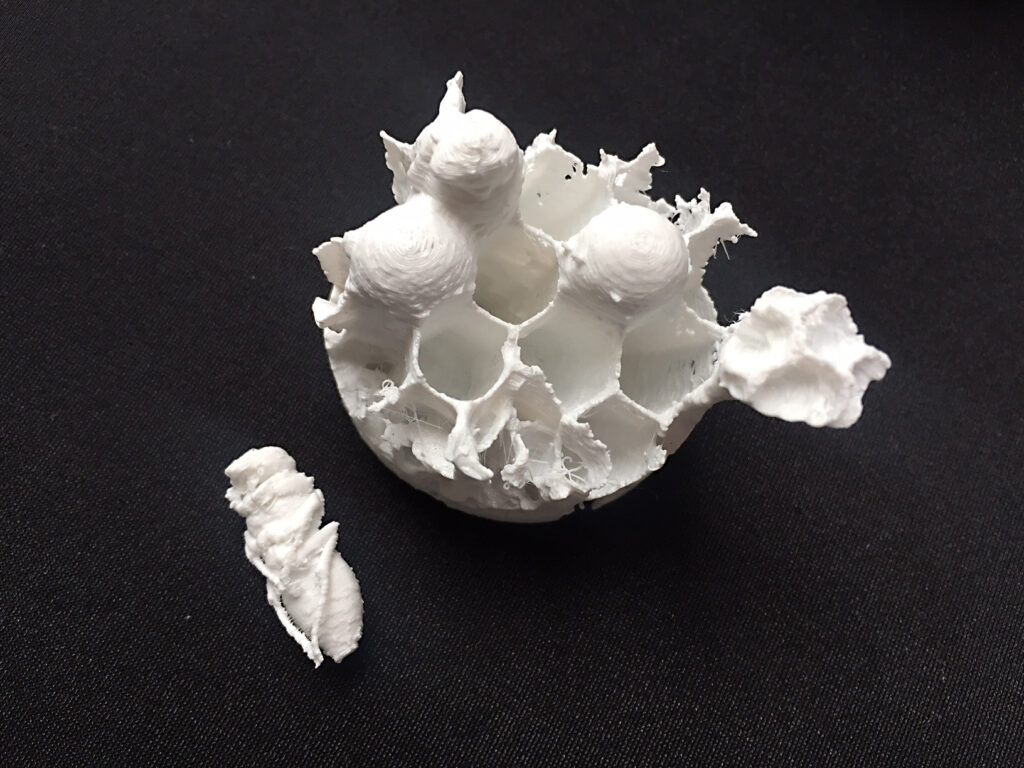Biennale 2023 –
More With Less

I was given the wonderful opportunity to exhibit at the Biennale Architettura in Venice. A favorite topic in my research, and a generally very relevant one too, is the question of how we can learn from nature for engineering. It seems obvious that, with a growing world population and shrinking resources, we need to build more – and better – with less.
Seen globally, most humans live in the most modest of surroundings, while a select few live in wealth. Wanting to enable more people to live in adequate and healthy surroundings, the question of how to construct their habitats comes up. This directly influences the way we design and construct structural systems.
Learning from Nature means benefitting actively from evolution. All examined structural models are based on growth forms of living beings themselves or their own structures, as in the case of the honeycomb. Millions of years of structural trial and error has resulted in solutions for specific problems, and understanding them can benefit us.

Less is Better
Be it „live in less: tiny houses“ or „buy less: upcycle clothes“: humanity is (finally) realizing that growth is not everything. The slogan „REDUCE – REUSE – RECYCLE“ echoes in our minds and souls. Whilst years ago, contractors would name the amount of material used in their newly constructed buildings, nowadays we need to be ambitious to name how much less material (mostly named as CO2 footprint) was needed in new buildings than before. This attitude is to be spread and established in how to design load-bearing structures.
Learning from Nature
Nature is in a constant process of optimization. This results from competitive animals (predators and their resistant victims) or from self-formation of geometries (motion and equilibrium), producing „innovative“ structural systems such as cantilevers, membranes,
shells, struts, – classical elements of structural theory. In terms of material, animals and especially insects show us how to construct material-efficient structures that are optimized, fully recyclable – and very aesthetic. Everyone involved in architecture and structure must learn from nature.

Biomimetics
Inspired by the principles of the optimization processes in nature, the principle of biomimetics in terms of structural design should not refer to copying the geometries of nature. The principle is to describe, understand and re-produce their structural behaviour, using modern design tools. Adapting biological processes into architecture and engineering is essential.
Aesthetics of Structures
While structures are considered to be a necessity (in terms of building) and connected to a theoretical subject called „physics“ (in terms of education), they are aesthetic in a sensuous way. In a visual way, they catch attention. In a physical way, people get an awareness of how structures work while touching them : a cable subject to tension, a strut subject to compression. This is the „physical“ component of the aesthetics, the perception of structures. The part of being elegant and beautiful is the other component of aesthetics.
How can we merge the two?
„Aesthetic structures are efficient. Efficient structures are aesthetic.“
